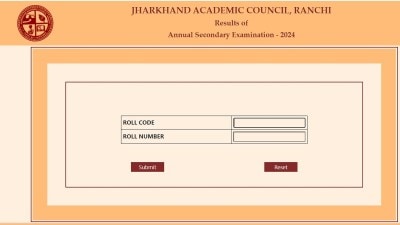- India
- International
Explained: What is the ‘Long Period Average’, IMD’s benchmark for monsoon prediction?
The IMD's prediction of a normal monsoon on Thursday was based on the LPA of the 1971-2020 period, during which India received 87 cm of rain for the entire country on average
 In its FAQs on the monsoon, the IMD gives the example of the LPA of the southwest monsoon rainfall over Kerala: 556 mm, 659 mm, 427 mm and 252 mm for the months of June, July, August, and September respectively. (Express Photo by Abhisek Saha)
In its FAQs on the monsoon, the IMD gives the example of the LPA of the southwest monsoon rainfall over Kerala: 556 mm, 659 mm, 427 mm and 252 mm for the months of June, July, August, and September respectively. (Express Photo by Abhisek Saha)
The country is likely to receive a normal monsoon for the fourth consecutive year, the India Meteorological Department (IMD) said in its first Long Range Forecast (LRF) for this year released on Thursday (April 14).
Rainfall in the four-month June-September southwest monsoon season was in the normal range in 2019, 2020, and 2021 as well.
The IMD predicts a “normal”, “below normal”, or “above normal” monsoon in relation to a benchmark “long period average” (LPA). According to the IMD, the “LPA of rainfall is the rainfall recorded over a particular region for a given interval (like month or season) average over a long period like 30 years, 50 years, etc”.
The IMD’s prediction of a normal monsoon on Thursday was based on the LPA of the 1971-2020 period, during which India received 87 cm of rain for the entire country on average. The IMD has in the past calculated the LPA at 88 cm for the 1961-2010 period, and at 89 cm for the period 1951-2000.
While this quantitative benchmark refers to the average rainfall recorded from June to September for the entire country, the amount of rain that falls every year varies from region to region and from month to month.

Therefore, along with the countrywide figure, the IMD also maintains LPAs for every meteorological region of the country — this number ranges from around 61 cm for the drier Northwest India to more than 143 cm for the wetter East and Northeast India.
In its FAQs on the monsoon, the IMD gives the example of the LPA of the southwest monsoon rainfall over Kerala: 556 mm, 659 mm, 427 mm and 252 mm for the months of June, July, August, and September respectively.
Broken down monthwise for the entire country, the LPA figures for the season are 16.36 cm for June, 28.92 cm for July, 26.13 cm for August, and 17.34 cm for September.
Why LPA is needed
The IMD records rainfall data at more than 2,400 locations and 3,500 rain-gauge stations. Because annual rainfall can vary greatly not just from region to region and from month to month, but also from year to year within a particular region or month, an LPA is needed to smooth out trends so that a reasonably accurate prediction can be made.
A 50-year LPA covers for large variations in either direction caused by freak years of unusually high or low rainfall (as a result of events such as El Nino or La Nina), as well as for the periodic drought years and the increasingly common extreme weather events caused by climate change.
Range of normal rainfall
In its forecast on Thursday, the IMD said: “Southwest monsoon seasonal (June to September) rainfall over the country as a whole is most likely to be normal (96 to 104% of LPA. Quantitatively, the monsoon seasonal (June to September) rainfall is likely to be 99% of the LPA with a model error of ± 5%. The LPA of the season rainfall over the country as a whole for the period 1971-2020 is 87 cm.”
The IMD maintains five rainfall distribution categories on an all-India scale. These are:
* Normal or near normal, when the percentage departure of actual rainfall is +/-10% of LPA, that is, between 96-104% of LPA;
* Below normal, when departure of actual rainfall is less than 10% of LPA, that is 90-96% of LPA;
* Above normal, when actual rainfall is 104-110% of LPA;
* Deficient, when departure of actual rainfall is less than 90% of LPA; and
* Excess, when the departure of actual rainfall is more than 110% of LPA.
Newsletter | Click to get the day’s best explainers in your inbox
More Explained
EXPRESS OPINION
Apr 19: Latest News
- 01
- 02
- 03
- 04
- 05








































